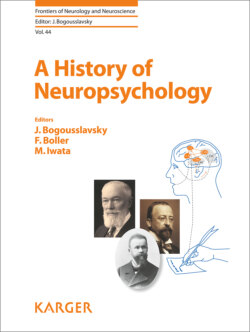Читать книгу A History of Neuropsychology - Группа авторов - Страница 74
На сайте Литреса книга снята с продажи.
Apraxia and Agraphia
ОглавлениеHugo Liepmann (1863–1925) in Berlin offered a theoretical framework for apraxia, disorders characterized by the failure to carry out motor tasks despite the ability to do so [42]. In 1907, Liepmann and Otto Maas (1874–1965) reported the case of a man with unilateral agraphia [43]. He had right-sided weakness. Despite normal speech and speech understanding, he was unable to follow commands requiring the use of his left arm. He could not write, copy text, or use anagram letters to spell his name. An autopsy showed damage from a large stroke in the distribution of the anterior cerebral artery. Involvement of the rostral corpus callosum and white matter tracts disrupted connections between anterior regions of the 2 cerebral hemispheres. Liepmann and Maas [43] attributed agraphia to apraxia of the left hand due to the disruption between motor cortex of the right hemisphere, which controlled left hand movements, and left hemisphere areas responsible for goal-oriented movements.
